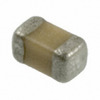- Deutsch
-
EnglishDeutschItaliaFrançais日本語한국의русскийSvenskaNederlandespañolPortuguêspolskiSuomiGaeilgeSlovenskáSlovenijaČeštinaMelayuMagyarországHrvatskaDanskromânescIndonesiaΕλλάδαБългарски езикAfrikaansIsiXhosaisiZululietuviųMaoriKongeriketМонголулсO'zbekTiếng ViệtहिंदीاردوKurdîCatalàBosnaEuskeraالعربيةفارسیCorsaChicheŵaעִבְרִיתLatviešuHausaБеларусьአማርኛRepublika e ShqipërisëEesti Vabariikíslenskaမြန်မာМакедонскиLëtzebuergeschსაქართველოCambodiaPilipinoAzərbaycanພາສາລາວবাংলা ভাষারپښتوmalaɡasʲКыргыз тилиAyitiҚазақшаSamoaසිංහලภาษาไทยУкраїнаKiswahiliCрпскиGalegoनेपालीSesothoТоҷикӣTürk diliગુજરાતીಕನ್ನಡkannaḍaमराठी
Fahrtechniken, die den Kraftstoffverbrauch beeinflussen
- 2024/10/15
- 99
Katalog
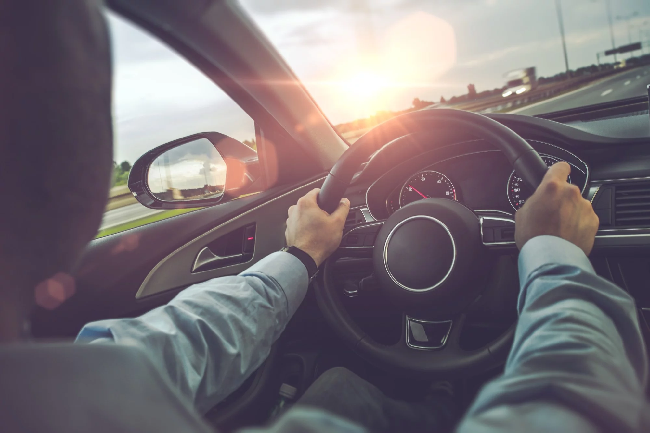
Beherrschen Sie die Impuls- und Gleittechnik für eine optimale Kraftstoffeffizienz
Die "Puls and Glide" -Technik hilft Ihnen dabei, Kraftstoff durch die Verwendung von Dynamik zu sparen.Sie können bis zu 20% Kraftstoff einsparen, indem Sie schnell bis zu 50 Meilen pro Stunde (Impuls) beschleunigen und die Autoküste dann auf 30 Meilen pro Stunde (Gleiten) nachlassen.Auf diese Weise können Sie durchschnittlich 40 Meilen pro Stunde und weniger Kraftstoff einsetzen als mit einer konstanten Geschwindigkeit.Wenn Sie können, wann immer Sie können, um noch bessere Einsparungen zu erhalten.
Um diese Methode effektiv zu verwenden, achten Sie auf die Straße.Beschleunigen Sie, wenn Sie bergab bergab gehen und an der Küste gehen.Dies hilft Ihrem Auto, sich zu bewegen, ohne zusätzlichen Kraftstoff zu verwenden.Ausgehend von einem Stopp am Ende eines Hügels verbraucht viel Energie, was es weniger effizient macht.
Wenn Sie sich der bevorstehenden Straße bewusst sind, können Sie die Impuls- und Gleitmethode besser verwenden.Wenn Sie wissen, was kommt, können Sie die Geschwindigkeit reibungslos wechseln, Kraftstoff einsparen und die Fahrt bequemer machen.Langstreckenfahrer planen ihre Geschwindigkeiten oft auf der Grundlage ihrer Straßenerfahrung.
Impuls ist die Haupttechnik zu dieser Technik.Es lässt Ihr Auto ohne zusätzliche Energie in Bewegung weiter in Bewegung sein, wodurch Kraftstoff spart.Sie können weniger Kraftstoff verwenden, wenn Sie diese Methode üben.
Minimieren Sie Bremsen und Küste mehr
Das Minimieren des Gebrauchs von Bremsen und Rollen häufiger kann die Kraftstoffeffizienz verbessern.Durch das Rollen sparen Kraftstoff, da es den Strombedarf des Motors beim Verlangsamen verringert.Durch die Erwartung von Verkehrssignalen und langsamer Verlangsamung, bevor Sie eine Ampel erreichen, können Sie zum Licht rollen, anstatt vollständig anzuhalten.Dies spart Kraftstoff und reduziert den Verschleiß an den Bremsen, was Ihrem Fahrzeug hilft, länger zu dauern.
Während der Befolgung von Stoppschildern und Verkehrsgesetzen erforderlich ist, kann das Lernen, Verkehrssituationen vorherzusagen, den Kraftstoffverbrauch erheblich verbessern.Wenn Sie die Ampeln beobachten und Ihre Geschwindigkeit im Voraus einstellen, können Sie unnötige Stopps vermeiden, was zu einem glatteren Fahren und einer geringeren Wahrscheinlichkeit von Staus führt.Diese Gewohnheiten fördern auch sichereres Fahren, indem sie eine kontrollierte Umgebung schaffen.
Die Schaffung eines sicheren Raums zwischen Ihrem Fahrzeug und dem vor Ihnen bei der Aufrechterhaltung einer konstanten Geschwindigkeit und reduziert das plötzliche Bremsen.Diese einfache Veränderung kann Ihre Fahrleistung verbessern.Wenn Sie eine sichere Entfernung behalten, können Sie Ihre Geschwindigkeit ohne Störungen einstellen, was die Kraftstoffeffizienz und die Verkehrssicherheit verbessert, indem Sie die Bewegungen anderer Fahrer vorwegnehmen.
Schrittweise Beschleunigung
Schnell beschleunigen kann Kraftstoff verschwenden.Wenn Sie das Gaspedal hart drücken, gelangt viel Kraftstoff in den Motor, aber dieser zusätzliche Kraftstoff schafft nicht mehr Energie.Stattdessen erzeugt es Nebenprodukte wie Ruß und Wärme.Stellen Sie sich den Motor als Pumpe vor: Wenn er mehr Luft einnimmt, benötigt er mehr Kraftstoff, sodass er härter funktioniert und mehr Kraftstoff verschwendet.Die allmähliche Beschleunigung wie das Erreichen von fünf Sekunden bis zu 15 Meilen pro Stunde kann die Kraftstoffeffizienz verbessert werden.
Mehrere Vorteile für diesen Ansatz:
• Eine reibungslose Beschleunigung spart Kraftstoff und reduziert den Verschleiß am Motor.
• Es hilft, die Lebensdauer des Fahrzeugs zu verlängern und die Wartungskosten zu senken.
• Techniken aus Ökotrennprogrammen fördern die allmähliche Beschleunigung, um den Kraftstoffverbrauch zu verbessern und die Auswirkungen auf die Umwelt zu verringern.
Bei dieser Methode geht es nicht nur darum, wie das Auto funktioniert.Dies ist eine intelligente Möglichkeit zum Fahren, der den Kraftstoffverbrauch maximiert und das Fahrerlebnis verbessert.Sie verwenden häufig ähnliche Strategien im Rennsport, bei denen das Management von Kraftstoff einen großen Unterschied in der Leistung bewirken kann.
Das Verständnis der allmählichen Beschleunigung zeigt die breitere Wirkung.Es spart Ihnen nicht nur Geld, sondern unterstützt auch ökologische Nachhaltigkeit.Es ist nicht nur ein Tipp.Es ist ein Hauptteil des verantwortungsvollen Fahrens.
Schalten Sie den Motor im Leerlauf aus
Wenn Sie Ihren Motor beim Leerlauf ausschalten, sparen Sie Kraftstoff und reduzieren die Emissionen.Überraschenderweise verwendet der Neustart Ihres Motors weniger Kraftstoff als das Laufen.Eine Studie zeigte, dass eine Ford -Fusion von 2011 weniger Kraftstoff mit häufigen Neustarts als beim Leerlauf verwendete.Viele moderne Autos haben jetzt Start-Stop-Technologie, die den Motor automatisch ausschaltet, wenn sie an der Ampel angehalten werden, und startet ihn beim Entlassen der Bremse neu.Wenn Ihr Auto über diese Funktion nicht verfügt, denken Sie daran, Ihren Motor zu schalten, wann immer Sie können, insbesondere bei langen Stopps.Der Leerlauf verschwendet Kraftstoff, weil der Motor Gas verbrennt, ohne das Fahrzeug zu bewegen, was im Stadtverkehr besonders verschwenderisch ist.Wenn Sie kleine Änderungen vornehmen, z. B. Ihren Motor an Zugübergängen oder Planungsrouten ausschalten, um das Leerlauf zu minimieren, kann dies zu effizienten Einsparungen des Kraftstoffs führen und die Umwelt unterstützen.Durch die Einbeziehung dieser Gewohnheiten in Ihren täglichen Routine können Sie Geld sparen und zu einem nachhaltigeren Lebensstil beitragen.
Halten Sie sich an die Geschwindigkeitsbegrenzung
Das Fahren von über 50 Meilen pro Stunde kann die Kraftstoffeffizienz Ihres Autos beeinträchtigen.Untersuchungen zeigen, dass schneller als diese Geschwindigkeit mehr Kraftstoff verwendet.
Zum Beispiel erhöht die Fahrt mit einer Fahrt von 15 Meilen bei 75 Meilen pro Stunde anstelle von 60 Meilen pro Stunde den Kraftstoffverbrauch um 20% für nur zweiminütige Zeiteinsparungen.Wenn Sie sich an das Tempolimit halten, sparen Sie Kraftstoff und senken die Kosten.
Nach der Geschwindigkeitsbegrenzung verbessert auch die Sicherheit.Das Fahren mit niedrigeren Geschwindigkeiten gibt Ihnen mehr Zeit, um auf unerwartete Situationen zu reagieren, wodurch die Wahrscheinlichkeit von Unfällen verringert wird.Es wird Ihr Auto weniger belastet und die Wartungskosten im Laufe der Zeit verringert.Das Fahren langsamer kann Kraftstoff sparen und Ihrem Fahrzeug helfen, länger zu halten.
Eine weitere hilfreiche Technik ist die Puls-und-Glide-Methode.Dies beinhaltet die Änderung Ihrer Geschwindigkeit zwischen 55 und 65 Meilen pro Stunde, was einem Durchschnitt von etwa 60 Meilen pro Stunde ist.Wenn Sie sich zwischen reibungslosem Beschleunigen und des Rollens abwechseln, können Sie Kraftstoff sparen, ohne Ihre Reise viel Zeit zu verleihen.
Mit dieser Methode können Sie einen zusätzlichen Kraftstoffstopp überspringen und Ihnen Geld sparen.
Diese Gewohnheiten unterstützen die Ziele, Kraftstoff zu sparen und die Umwelt zu schützen.Kleine Änderungen beim Fahren können sowohl für Ihre Brieftasche als auch für den Planeten zu großen Vorteilen führen.
Verwandter Blog
-
Netzteilspannung Abkürzung: VCC VDD VEE VSS GND

2024/06/6
Im modernen elektronischen Schaltungsdesign, Verständnis der Abkürzungen der Stromversorgungsspannung (wie VCC, VDD, VEE, VSS, GND).Diese Abkürzung... -
Ein Überblick über TTL- und CMOS -ICs und wie Sie zwischen ihnen wählen

2024/04/13
In diesem Artikel werfen wir einen detaillierten Blick auf zwei wichtige elektronische Technologien, komplementäre Metaloxid-Halbleiter (CMOS) und Tr... -
Verschiedene Arten von Sicherungen und Anwendungen

2024/04/18
Sicherungen sind wesentliche Komponenten in modernen elektrischen Systemen und fungieren als entscheidende Beschützer vor Überstrom.Sie arbeiten, in... -
Verständnis des C1815 -Transistors: Pinouts, Schaltungssymbole, Anwendungsschaltungen
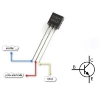
2023/12/20
Welche Art von Röhre ist der C1815?C1815 Triode PinoutC1815 ModellzeichnungC1815 -ParameterC1815 EigenschaftenAnwendung von C1815 Der C1815 -Transist... -
LR44 -Batterien: LR44 -Batterieäquivalente und LR44 -Batterieersatz
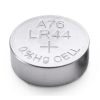
2024/01/24
In einem sich schnell entwickelnden technologischen Gebiet, in dem die Größe der elektronischen Geräte weiter schrumpfen und dennoch alltäglicher ... -
Grundkenntnisse über Sicherungen: Merkmale, Arbeitsprinzipien, Typen und wie man richtig auswählt
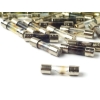
2024/04/10
Sicherungen schützen Schaltungen vor Schäden aufgrund von Überlastung oder Kurzstrecken.Dieses einfache, aber geniale Gerät basiert auf einem leic... -
Leitfaden zu Buck-, Boost- und Buck-Boost-Konverter

2023/12/21
Was ist ein Buck -Konverter?Wie funktioniert ein Buck Converter?Was ist ein Boost -Konverter?Wie funktioniert ein Boost -Konverter?Was ist ein Auftrie... -
Beschreiben Sie kurz die Spezifikationen, Verpackungen, das Arbeitsprinzip, die Vorteile und die Umweltauswirkungen von Lithium-Ionen-Batterien

2024/03/20
Seit der Einführung von wiederaufladbaren Blei-Säure-Batterien im Jahr 1859 wurden sie allmählich in den Gewebe des technologischen Fortschritts ei... -
Transistor (BJT und MOSFET) Arbeitsprinzipien
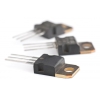
2023/12/20
Arbeitsprinzip des bipolaren Junction -Transistors (BJT)Auswahl der KomponentenwerteWie wählen Sie einen Transistor?Arbeitsprinzip von MOSFETWie scha... -
Grunde elektronische Grundkomponenten verstehen - Widerstände, Kondensatoren, Dioden, Transistoren, Induktoren und digitale Logik -Tore

2024/04/13
Elektronische Komponenten sind der Eckpfeiler des Bauens und der Optimierung elektronischer Schaltkreise.Von gewöhnlichen Haushaltsgeräten bis hin z... -
Beherrschen analoge und digitale Schaltungen: Ein Anfängerführer

2023/12/20
Definition und Eigenschaften von analogen Schaltungen und digitalen SchaltungenDer Unterschied zwischen analogen Schaltungen und digitalen Schaltungen... -
Eine vollständige Liste von Testmethoden für verschiedene Transistoren
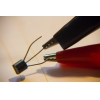
2023/12/20
Der Transistor wurde von John Bardeen, William Shockley und Walter Brattain erfunden.Es handelt sich um ein Kollektor-, Emitter- und Basis-Drei-termin... -
Gesamtzahl der Transistoren in einer CPU
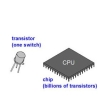
2024/06/14
In der modernen Computertechnologie ist die Beziehung zwischen der zentralen Verarbeitungseinheit (CPU) und den Transistoren zunehmend integraler gewo...
Heiße Teile
- C1005X6S0J224K050BC
- TPSD476M020R0075
- T491T336M006AT
- TAS3108DCPRG4
- CDCM9102RHBT
- STM32F446VCT6
- ADN4666ARUZ
- LT1085CT-3.3#PBF
- MKE04Z128VLH4
- TAS5614APHDR
- IR2125PBF
- ADP3334ARZ-REEL7
- MC33161DG
- ATBTLC1000A-UU-T
- VE-2N1-EU
- HS-PTF088A0022B15
- LV25-P/SP5
- V24A28T400BNT
- 2SC3133
- GD82541ER
- PCA9512DP
- PMB2362RV1.1GEG
- IPD042P03L3G
- LGE1854C-LF
- ST7066U-QG
- HI3512RBC100
- LT1172CS
- STLC60133TR
- AML8626-X
- IDT5P61006PGGI8
- LT1610IMS8
- APEXX-LGD02N
- VSC8110QB
- T491D106K025ZT
- T491C476M010AT4380
- S912XEQ512J2MAAR
- T491D475M035ZTZ012
- LFXP15C-5FN388C-4I
- LT1801IMS8#TR
- SIC6622BS
- CHA3688AQDG
- VSP9402AB13
- K1S32161CD-BI70
- SPHE8104F-HL20V
- MBM29DL163BE-70
- FAN7380MX-G
- VZT331M1HTR-1010
- F28M35H52C1 RFPT

